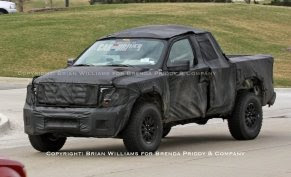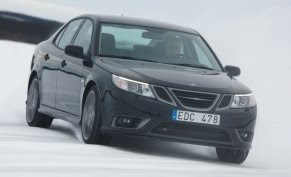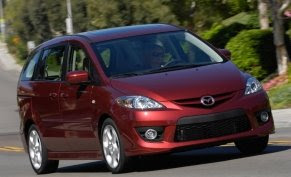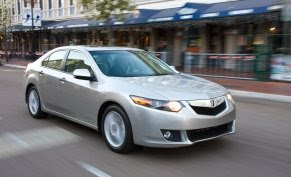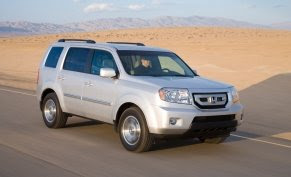
Honda reskins and rethinks its brilliantly packaged eight-passenger SUV.
When the Pilot launched in 2002 as an ’03 model, it was a little ahead of its time. Back then, trucky, body-on-frame SUVs such as the Ford Explorer were the big sellers, and fuel economy wasn’t  in the forefront of anyone’s mind. The Pilot’s innovative beginnings on the Odyssey minivan’s unibody architecture weren’t due to Honda’s superior foresight, however; the company simply didn’t have a body-on-frame platform to start with. So the Pilot launched by default as what is, in today’s vernacular, a crossover.
in the forefront of anyone’s mind. The Pilot’s innovative beginnings on the Odyssey minivan’s unibody architecture weren’t due to Honda’s superior foresight, however; the company simply didn’t have a body-on-frame platform to start with. So the Pilot launched by default as what is, in today’s vernacular, a crossover.
An intelligently packaged three-row, eight-passenger SUV, the Pilot was lighter and more efficient than the competition, as well as a smooth on-road driver, grabbing the large-SUV award at our annual 5Best Trucks competition six years in a row.
The competition took notice, and recently there has been an influx of competitors that have squarely targeted the Pilot: specifically, the Mazda CX-9 and GM’s quartet of large utes, the GMC Acadia, the Saturn Outlook, the Buick Enclave, and the Chevy Traverse.
Our current large-SUV champ in this ever-growing three-row class is the sporty CX-9, which knocked the Pilot off the podium for 2008. Naturally, Honda has rethought and updated the Pilot for 2009 to stay in the hunt.
Sticking to Its Sensibilities
This isn’t a radical redesign, as Honda had the formula pretty well nailed from the start. However, its customers clamored for some additional space, particularly in the third row and the cargo area. To that end, the ’09 Pilot gets a 2.9-inch stretch to both wheelbase and overall length and a one-inch gain in width and height, but it’s still about nine inches shorter than the CX-9 and the GM utes.
The new Pilot gets a bolder front end—anything is bolder than the current wallflower—that doesn’t look as awkward in person as it does in some of the photos. But this ute is all about function. It forgoes the recent trend of sportier, on-road-only SUVs and retains a high roofline to maximize headroom and cargo space, and it has a blocky shape that enables the rear cargo hold to accept four-foot-wide sheets of plywood. Ground clearance remains at eight inches to enable the light off-roading Honda says its customers demand. All Pilots come with a trailer hitch, and four-wheel-drive models can tow 4500 pounds (3500 for two-wheel-drive models). This practical approach leaves the similarly sized Acura MDX for buyers willing to pay more and sacrifice functionality for style, says Honda.
A redesigned interior features a see-through gauge cluster as well as a button-intensive center stack. The available navigation runs on a sharp eight-inch screen, but we think it’s a step backward to ditch friendly touch-screen controls for the corporate multifunction knob that’s spreading throughout Honda’s lineup.
Overall, we were unimpressed with the quality and fit and finish of the new Pilot’s interior, especially considering Honda representatives assured us that the preproduction cars we drove were very close to production intent. The dashboard plastics and the climate-control buttons come across as low-cost, and there are more cut-lines and larger gaps between panels than expected. This leaves a general impression that Honda is trying to squeeze a few bucks out of the interior.
The driver’s seat slides back farther than before—a welcome addition for this six-foot-five test driver who can now find complete comfort—and the steering wheel telescopes in addition to tilting.
The spacious second row benefits from an additional 1.1 inches of legroom and 0.8 inch of shoulder room that, Honda says, enables it to accommodate three car seats. It also slides forward farther to ease access to the way back.
The third row grows the most, with an additional 1.9 inches of legroom and a seat that’s positioned higher than before to better accommodate larger passengers. As far as third rows go, it’s a good one, but people much over six feet still won’t want to do much time back there.
Space behind the third row has grown by two cubic feet, three if you include the larger under-the-floor storage bin. That bin is even more useful now that the third-row headrests don’t have to be removed and stored there to fold the row flat.
Largely Unchanged Mechanicals
All Pilots are still powered by a 3.5-liter V-6, although it has received a few efficiency upgrades including a two-stage magnesium intake, a bump in compression ratio to 10.5:1, and a further evolution of the company’s cylinder deactivation technology. Power is up slightly to 250 horsepower and 253 pound-feet of torque, and the engine can operate on three, four, or all six cylinders (previously, it could only switch between three and six), which enables it to run in reduced-cylinder modes more often.
To fight vibrations that three- and four-cylinder operation produces, the Pilot gets new active engine mounts, noise-canceling vibes through the stereo system, and a torque converter with an additional damping spring. It’s smooth enough that the switching among modes is imperceptible.
The front and rear disc brakes are slightly upsized. The Pilot’s available full-time four-wheel drive, strut-front and multilink-rear independent suspension, and five-speed automatic are largely unchanged, although the shifter has been moved to a more out-of-the way dash location and still doesn’t feature manumatic control. When asked about the Pilot’s retaining a five-speed automatic while much of the competition is sporting six or more ratios, Honda answered “never say never” for the possibility of a six-speed transmission, but in the case of the Pilot, the company claims that adding ratios would reduce the time the engine spends in reduced-cylinder mode and wouldn’t boost fuel economy.
With the more-efficient engine, as well as lower-rolling-resistance tires (now 17s instead of 16s) and a slight improvement in drag coefficient, the ’09 Pilot boosts fuel-economy numbers by one or two to 17 mpg city and 23 highway for 2WD models and 16/22 for 4WD, and it runs on regular fuel. That’s impressive considering the size and weight gains. At 4350-to-4600 pounds, the ’09s are roughly 50 to 75 pounds heavier than the outgoing model.
Better Road Manners
Behind the wheel the new car is better in just about every way. Gone from the steering is the slight dead spot on-center, and the ride has been stiffened appropriately, getting rid of the previous car’s somewhat mushy-soft behavior. Acceleration feels similar (figure on 0-to-60 mph in the mid-seven-second range), there’s still some torque steer when accelerating vigorously out of corners (even in 4WD models), and the steering isn’t nearly as quick nor the tires as grippy as in such sporty wannabes as the Mazda CX-9. Is this a problem? Probably not, considering the Pilot’s mainstream, family-oriented buyers. The brake pedal is firm but forgiving. The Pilot might not be fun to drive in the thrilling sense, but knowing that you made a rational, intelligent choice is fun in its own right.
Safe, Safe, Safe
Honda expects to receive top ratings from all third-party crash testing, thanks to the Pilot’s beefed-up structure, and the Pilot comes with standard front-, side-, and three-row curtain airbags. Stability control, which includes traction control and anti-lock brakes, is also standard.
The model lineup is similar, starting with the base LX. The EX adds alloy wheels, three-zone automatic climate control, a power driver’s seat, and a six-CD changer. The EX-L trim adds leather, a sunroof, and a rear backup camera displayed in the rearview mirror. A new, top-of-the-line Touring model adds navigation, Bluetooth and iPod-friendly USB connectivity, and a previously unavailable power liftgate. Rear-seat DVD entertainment is available on the EX-L and Touring.
Honda plans to sell about 140,000 Pilots a year. They are built in its Lincoln, Alabama, facility and will arrive at dealers in May, starting at about $28,000 and stretching to $40,000 for the fully loaded Limited trim.

